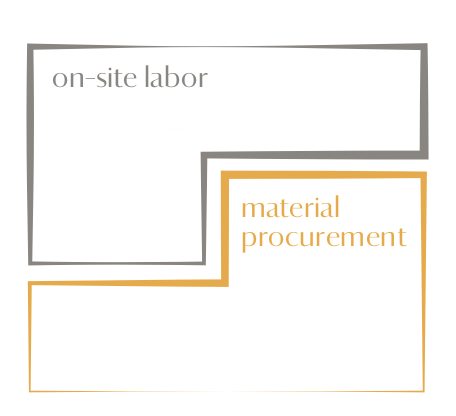Forced labor, urban migration, and the built environment
In the 21st century, nearly every product introduced within the built environment is the result of an international supply chain of material and energy exchanges. However, those who labor in the extraction, manufacturing, installation, and recycling of building materials are typically the most disempowered, disenfranchised, and at-risk, because they are migrants — internal or transborder.
There are abundant examples of compromised labor practices in the building industry. The large-scale migration of low-skilled laborers to urban centers (the dark and dangerous underbelly of most rapidly developing cities) accelerates the problem of forced labor in the construction sector. Ambitious construction projects continue unabated despite the international economic downturn of the early 21st century. The sheer quantity and magnitude of new cities, whether planned or built, carefully designed or informal, stupefies even the most jaded observer. And yet, urbanization at this scale is only possible with a migrant workforce of unskilled laborers who are called upon to toil on its building sites.

Millions of people travel across the globe in search of work in all sectors of the materials supply chain and the construction of buildings. This transnational displacement of vast numbers takes place within a highly de-politicized body politic, while evidence mounts that the resulting forced labor kills. According to the Center for Construction Research and Training, barriers to wage equality, safety, and union entry persist for migrant Hispanic workers in the U.S. They represent approximately 50% of all drywall installers and concrete workers in the U.S., yet they remain voiceless and at increased physical risk.[1]
Work-related fatalities amongst Latino construction workers exceeds the proportion of their representation. They are the most vulnerable of laborers in the most hazardous of industries. According to the International Labour Organization investigators in the report Migrant Work & Employment in the Construction Sector,[2] migrant construction workers — whether national or international — are regularly exposed to financial debt incurred while securing employment, physically strenuous working conditions on-site, sub-standard living conditions off-site, and lax immigration laws which do not expressly forbid indentured or forced labor. And governments often provide no support: in South Africa, where entry into the country is fairly easy and where unemployment figures remain high, foreign workers are often arrested, deported, and even mistreated by law enforcement and employers.
Global attention should be brought to these issues of death and abuse. In the lead-up to the 2014 World Cup in Brazil, severe human rights violations on construction sites were registered against OAS S.A., a contractor charged with building office and airport infrastructure for the games, including forced labor and death.[3] That same year saw allegations of exploitation of migrant site workers at the Sochi Winter Olympics, including withholding of documents and excessive working hours.[4] In 2018, similar accusations were made against the builders of the Istanbul Airport expansion as reported in Construction News and The Architects’ Journal.[5] In 2019, an executive of U.S. Rilin Corp, a unit of a privately held Chinese construction company, was found guilty of having forced Chinese nationals to work under conditions of debt-bondage.[6] And lastly, the most notorious of on-site violations may be those registered against the various projects associated with construction of the 2022 Qatar World Cup sites, both its stadiums and larger city infrastructure.[7]
These are but a few of the case studies I am investigating with the help of architecture student and research assistant Jessica Marie Greene. As a faculty member in a school of architecture which educates professional architects, I believe this is an important issue which all must address when participating in the global exchange of materials and labor. After all, each of these projects was designed by an architect, and as architects, we are not immune to the responsibilities of making all work sites safe and respectful of basic human rights.
[1] Center for Construction Research and Training. The Construction Chart Book. April 2013.
[2] Buckley et al. “Migrant Work and Employment in the Construction Sector,” International Labour Organization (ILO). Geneva, 2016.
[3] “Brazil World Cup Workers ‘Face Slave-Like Conditions’,” BBC News. September 26, 2013.
[4] Race to the Bottom: Exploitation of Migrant Workers Ahead of Russia’s 2014 Winter Olympic Games in Sochi, Human Rights Watch. February 6, 2013.
[5] Hurst, Will and Purkis-Garner, Zak. “Investigation: The Human Cost of Building the World’s Biggest Airport,” Architects’ Journal. October, 2019.
[6] Pierson, Brendan. “Ex-Chinese Construction Exec Found Guilty in U.S. of Forced Labor Charges,” Reuters. March 22, 2019.
[7] Promising Little, Delivering Less: Qatar and Migrant Labour Abuse Ahead of the 2022 Football World Cup, Amnesty International. 2015.